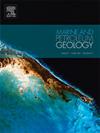Porosity estimation using deep learning and ImageJ: Implications for reservoir characterization in Central Luconia Miocene carbonates
IF 3.6
2区 地球科学
Q1 GEOSCIENCES, MULTIDISCIPLINARY
引用次数: 0
Abstract
Accurate porosity prediction is essential for effective reservoir characterisation, particularly in heterogeneous carbonate systems. This study investigates applying deep learning techniques to predict porosity from petrographic thin-section images of Miocene carbonate reservoirs in Central Luconia, offshore Malaysia. Four semantic segmentation models—UNet, SegNet, PSPNet, and Fully Convolutional Network (FCN)—were trained and evaluated, with UNet achieving the highest performance across all metrics: accuracy (0.990), precision (0.849), recall (0.940), F1 score (0.892), and Intersection over Union (IoU) (0.805). These results were benchmarked against traditional image analysis using ImageJ, where UNet predictions showed strong alignment, highlighting its reliability. SegNet also performed robustly, while PSPNet and FCN demonstrated lower predictive accuracy. The study further explored the impact of data augmentation, revealing performance degradation in SegNet and PSPNet due to distortion of micropore structures. A classification scheme based on UNet output identified porosity ranges, with 71.90 % of samples exhibiting <5 % porosity, reflecting a low-porosity-dominated system. A spatial porosity distribution map was also generated using UNet to visualise heterogeneity across thin-section samples. It is important to note that this map is a conceptual representation and does not reflect the actual porosity distribution of the broader reservoir. Instead, it serves as a hypothetical visualisation to enhance understanding of porosity characteristics and heterogeneity within the analysed thin-section images. This work demonstrates the advantages of deep learning over conventional techniques for pore-scale analysis. It offers a scalable framework for integrating artificial intelligence in quantitative reservoir quality assessment.
基于深度学习和ImageJ的孔隙度估算:中陆盆统中新世碳酸盐岩储层表征的意义
准确的孔隙度预测对于有效的储层描述至关重要,特别是在非均质碳酸盐岩体系中。本研究旨在利用深度学习技术预测马来西亚Luconia中部中新世碳酸盐岩储层的岩石薄片图像孔隙度。四种语义分割模型——UNet、SegNet、PSPNet和全卷积网络(FCN)——进行了训练和评估,UNet在所有指标上都取得了最高的性能:准确率(0.990)、精度(0.849)、召回率(0.940)、F1分数(0.892)和交集比联合(IoU)(0.805)。这些结果与使用ImageJ的传统图像分析进行了基准测试,其中UNet预测显示出很强的一致性,突出了其可靠性。SegNet也表现稳健,而PSPNet和FCN表现出较低的预测准确性。该研究进一步探讨了数据增强的影响,揭示了SegNet和PSPNet由于微孔结构扭曲而导致的性能下降。基于UNet输出的分类方案确定了孔隙度范围,71.90%的样品孔隙度为5%,反映了低孔隙度为主的系统。利用UNet生成了空间孔隙度分布图,以可视化薄片样品的非均质性。值得注意的是,这张图是一个概念性的表示,并不能反映更广泛的储层的实际孔隙度分布。相反,它可以作为一种假设的可视化,以增强对所分析的薄片图像中的孔隙度特征和非均质性的理解。这项工作证明了深度学习相对于传统孔隙尺度分析技术的优势。它为将人工智能集成到定量储层质量评价中提供了一个可扩展的框架。
本文章由计算机程序翻译,如有差异,请以英文原文为准。
求助全文
约1分钟内获得全文
求助全文
来源期刊

Marine and Petroleum Geology
地学-地球科学综合
CiteScore
8.80
自引率
14.30%
发文量
475
审稿时长
63 days
期刊介绍:
Marine and Petroleum Geology is the pre-eminent international forum for the exchange of multidisciplinary concepts, interpretations and techniques for all concerned with marine and petroleum geology in industry, government and academia. Rapid bimonthly publication allows early communications of papers or short communications to the geoscience community.
Marine and Petroleum Geology is essential reading for geologists, geophysicists and explorationists in industry, government and academia working in the following areas: marine geology; basin analysis and evaluation; organic geochemistry; reserve/resource estimation; seismic stratigraphy; thermal models of basic evolution; sedimentary geology; continental margins; geophysical interpretation; structural geology/tectonics; formation evaluation techniques; well logging.
 求助内容:
求助内容: 应助结果提醒方式:
应助结果提醒方式:


